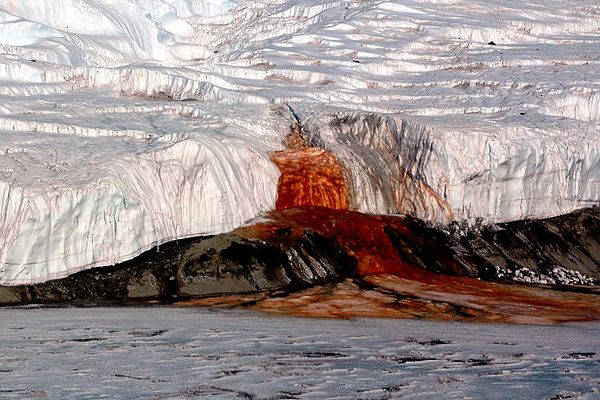100 Wonders: Blood Falls
Roughly two million years ago, the Taylor Glacier sealed a small body of brackish water beneath it. That water contained an ancient community of microbes. Inside a natural time capsule, with no light, no free oxygen, and in the extreme cold, the microbes fought to survive. Survive they did.
The five-story, blood-red waterfall that leaks out of the Taylor Glacier in Antarctica’s McMurdo Dry Valleys is one of our only windows into these novel life forms. There are 17 kinds of this organism and the microbes appear to have adapted to survive on iron sulfate, using the oxygen trapped in the sulfate to breath. It is an adaption never before seen until Blood Falls. And the Blood Falls research may have much farther reaching impacts than just understanding the origin of this odd iron-sulfate eating creature.
The conditions in Antartica, and particularly in the McMurdo Dry Valleys, are some of the closest analogs on Earth for an alien landscape. The tools and techniques being developed to find and study the microbes found in Blood Falls, and the brine lake from which it flows, will be helpful when we go looking for life on other planets and moons.
Consider Blood Falls our dry run for Europa.


























Follow us on Twitter to get the latest on the world's hidden wonders.
Like us on Facebook to get the latest on the world's hidden wonders.
Follow us on Twitter Like us on Facebook